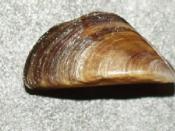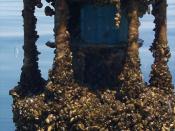Colorado invasive species project
In nature a non-native species is one who does naturally occur in a given area. But an evasive species is spread widely in a habitat or an environment, but is not necessarily a non-native species. The impact of non-native species have been huge, both beneficial and hurtful but in the long run, mostly hurtful. Benefits of a non-native species are like when horses were introduced into North America. The horses played such a big part in the colonization of the United States we almost couldn't be here without them. Negatives will rule out the positives though, when inserted into a native food chain like a Fire Ant into Texas, it can throw off the flow of nutrients in that ecosystem. The Fire Ant which is lower in the chain would be harmful to the animals higher in the chain like the Horned Lizard. Although the lizard has a somewhat large preferred prey it is unpalatable for the lizard, and thus has no ants to eat.
Non-native plants (like weeds) also have a very big impact overwhelming the native plants and taking over their space, nutrients and water. Managing non-native species is the worst part of it all. These few organisms can cost the USA $137 Billion Annually! Even in 1989 just in Colorado the cost to the wheat farmers was over $24 million. Ways that these organisms can be controlled are biological, ecological, and legislative all of which we are able to do. Biological is a way in which there is a natural enemy introduced. This is normally used when that species has become very dense over an area. It can be a very economical and natural way to do control that species but sometimes it cannot work because of it going after the non-targeted species...


